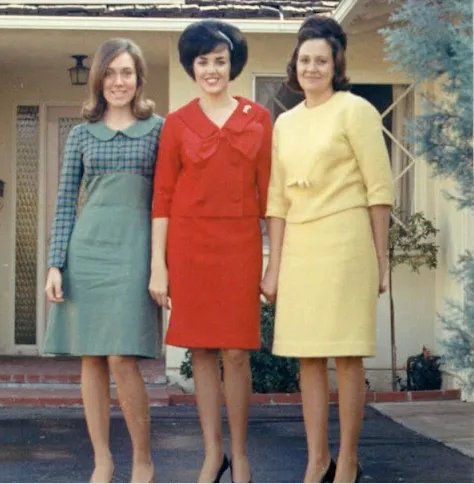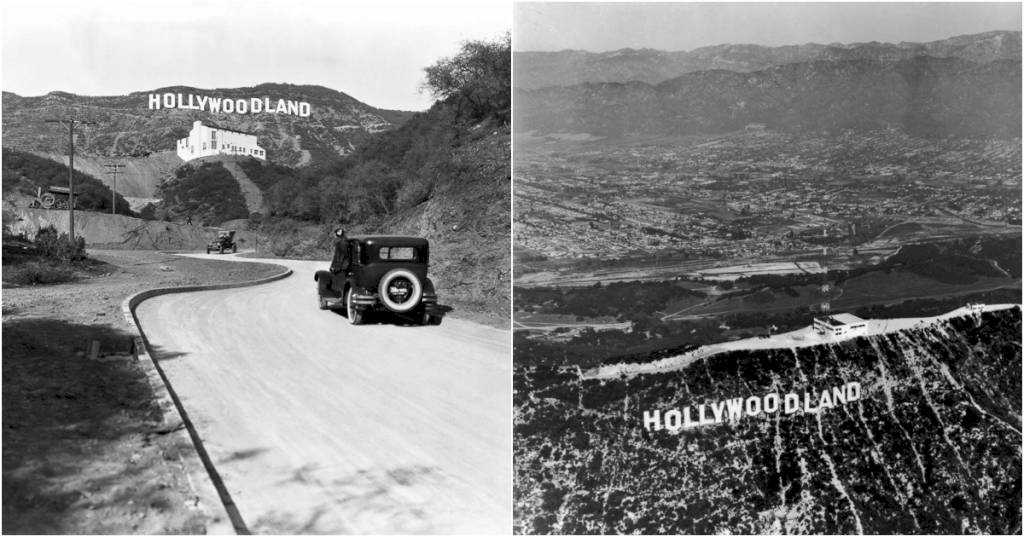
The Antarctic Snow Cruiser was developed under the direction of famed explorer Admiral Richard Byrd and it was intended to facilitate transport in Antarctica during the United States Antarctic Service Expedition (1939–41).
His second-in-command, Dr. Thomas Poulter, returned from a previous Antarctic expedition (in 1934) with the idea for a massive, purpose-built transport vehicle for Antarctic exploration.
It was envisioned as an unstoppable machine for long-distance travel on the continent’s endless swaths of snow and ice, especially during the harsh weather conditions.
On April 29, 1939, Poulter and The Research Foundation of the Armour Institute of Technology showed the plans to officials in Washington, D.C. The foundation would finance the Antarctic Snow cruiser with an estimate of $150,000.
Work began on August 8, 1939, and lasted for 11 weeks. Designed particularly for traversing crevasses, the vehicle had long overhangs at either end, as well as retractable wheels to assist in this process.
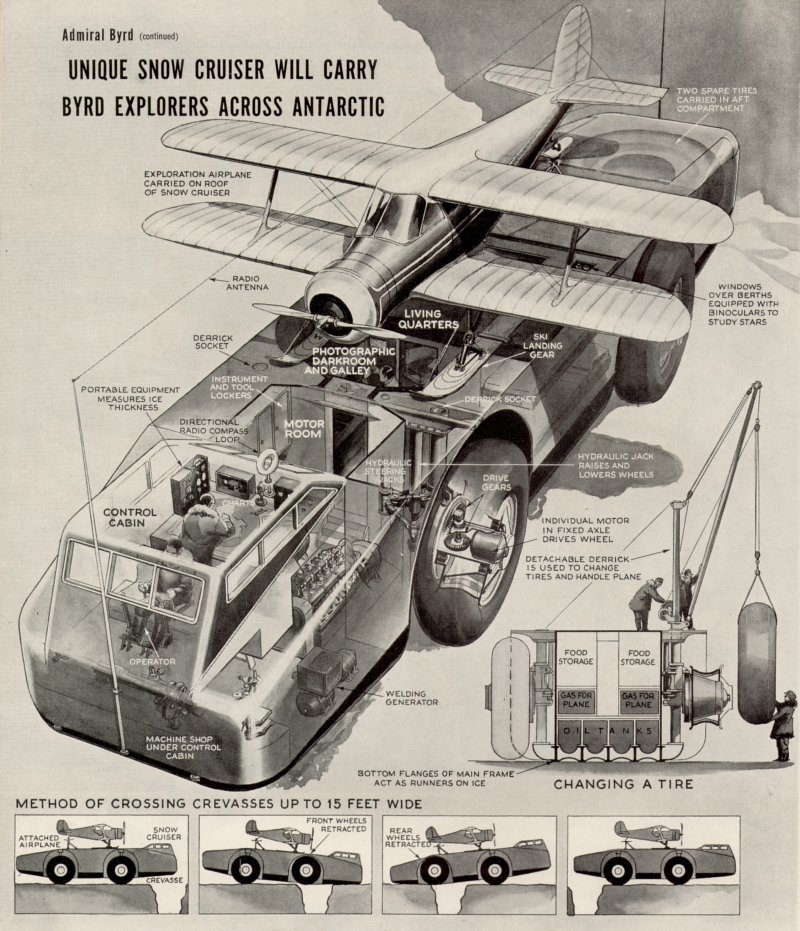
Cutaway diagram.
The Snow Cruiser was 55 feet (17 m) long and 15 feet (4.6 m) wide, weighed 45,000 pounds (20 tons) and was designed to house four to five people for a year with all their food, fuel, and equipment.
Besides living quarters, it held a science lab, a photography darkroom, an engine room, and a small machine shop. Its wheels were each 10 feet (3 m) in diameter, weighed 700 pounds (318 kg), and were made from a special type of rubber that would not break or crumble in the extreme cold.
Each wheel could be steered independently with its own motor, a system that would allow the Snow Cruiser to navigate difficult terrain or cross 15-foot-wide crevasses.
The vehicle was designed for an average speed of 1- to 13 miles (16 to 21 km) per hour, with a maximum speed of 30 miles (48 km) per hour. Its broad upper deck was designed to carry a small airplane.

Chicagoans got their first good look at the giant snow cruiser built for the Admiral Byrd Antarctic expedition when it was rolled out of the Chicago construction yards on October 24, 1939.
Up front, in an elevated control room, sat the Snow Cruiser driver and charter. Underneath the control room, beneath a catwalk, were the machine shop, snow melter, and a variety of generators, pumps, and hoists.
Just ahead of the front wheels was the engine room, housing a pair of Cummins inline-six diesel engines that combined for 300 horsepower.
The engines were paired with two generators and four electric motors, courtesy of General Electric, which also combined for 300 hp.
On October 24, 1939, the vehicle was fired up for the first time at the Pullman Company just south of Chicago and from there, drivers took the newly built vehicle across the Midwest.
They made test drives on sand dunes along Lake Michigan in northern Indiana and then drove across Ohio, Pennsylvania, and New York.
As it crossed the nation, roads were closed to traffic because the vehicle required both lanes. This created massive traffic jams and also drew crowds of onlookers.
Finally, they reached Boston, Massachusetts, and departed for Antarctica on November 15, 1939, aboard the USCGC North Star. The vehicle was also known as “The Penguin,” “Penguin 1” or “Turtle” in some published material.

A huge snow and ice cruiser designed for the Byrd Antarctic Expedition was unveiled in model form at Chicago July 14, 1939 by its designed Dr. Thomas Poulter. Resembling a cross between a bus and a tank, the actual cruiser will be 55 feet long and 15 feet high. It will be able to carry four men inside and an airplane depending upon conditions.
The Snow Cruiser was supposed to drive to the South Pole and track auroras (light displays by charged particles from the sun hitting Earth’s magnetic field), but that didn’t happen. The machine turned out to be far too heavy for the Antarctic snow.
The Snow Cruiser arrived at Little America in the Bay of Whales, Antarctica with the United States Antarctic Service Expedition in early January 1940 and experienced many problems.
It was necessary to construct a ramp from timber to unload the vehicle. As the vehicle was unloaded from the ship, one of the wheels broke through the ramp.
The crew cheered when Poulter powered the vehicle free from the ramp but the cheers fell silent when the vehicle failed to move through the snow and ice.
The large, smooth, treadless tires were originally designed for a large swamp vehicle; they spun freely and provided very little forward movement, sinking as much as 3 feet (0.91 m) into the snow.
The crew attached the two spare tires to the front wheels of the vehicle and installed chains on the rear wheels, but were unable to overcome the lack of traction.
The crew later found that the tires produced more traction when driven backwards. The longest trek was 92 miles (148 km) – driven completely in reverse. On January 24, 1940, Poulter returned to the United States, leaving F. Alton Wade in charge of a partial crew. Even though the Snow Cruiser was essentially a total failure, from the utter lack of traction to the underpowered engines, the vehicle proved to be a solid base of operations and full-time living quarters.
Even though the Snow Cruiser was essentially a total failure, from the utter lack of traction to the underpowered engines, the vehicle proved to be a solid base of operations and full-time living quarters.
Engine coolant traveled through the cabin’s structure, effectively heating the Snow Cruiser’s interior despite the brutally frigid conditions.
The scientists conducted seismologic experiments, cosmic-ray measurements, and ice core sampling while living in the snow- and timber-covered Snow Cruiser.
Poulter wanted to return to Antarctica and outfit the vehicle with improved parts, but when the U.S. became entangled in World War II, the government focused its funding on the war effort. The Antarctic Snow Cruiser was abandoned at the Little America III base on December 22, 1940.

The Antarctic snow cruiser, designed by the search foundation of Armour Institute of Technology in Chicago, undergoing tests in the dunes near Gary, Indiana, on October 26, 1939, while en route to Boston and then to the south polar areas.
During Operation Highjump in late 1946, an expedition team found the vehicle and discovered it needed only air in the tires and some servicing to make it operational.
In 1958, an international expedition uncovered the snow cruiser at Little America III using a bulldozer. It was covered by 23 feet (7.0 m) of snow and a long bamboo pole marked its position.
They were able to excavate to the bottom of the wheels and accurately measure the amount of snowfall since it was abandoned. Inside, the vehicle was exactly as the crew had left it, with papers, magazines, and cigarettes scattered all around.
Later expeditions reported no trace of the vehicle. Although there was some unsubstantiated speculation that the (traction-less) Snow Cruiser was taken by the Soviet Union during the Cold War, the vehicle most likely is either at the bottom of the Southern Ocean or buried deep under snow and ice. Antarctic ice is in constant motion and the ice shelf is constantly moving out to sea.

Admiral Byrd’s snow cruiser passes through traffic and onlookers before halting for the night in Framingham, Massachusetts, on November 12, 1939. Traffic was snarled for 20 miles in a jam that involved 70,000 automobiles. Note the two spare tires visible in the rear compartment of the cruiser.

The Snow Cruiser gently approaches a low bridge on its way to Boston in 1939.

The Snow Cruiser safely passes under a railroad bridge on its way to Boston in 1939.

The controls of the snow cruiser, with Dr. F. A. Wade (foreground), chief scientist of the U.S. Antarctic service, and Harold Vagtborg, director of the Armour Institute of Technology Research Foundation.

The vehicle arrives on Boston’s waterfront.

Policemen keep a path clear as the Snow Cruiser maneuvers to the wharf in Boston.

On the docks in Boston in November of 1939.

Onlookers watch as expedition members prepare to load the massive Snow Cruiser onto the deck of the North Star in November of 1939. The rear section of the vehicle is prepared for removal, to allow it to fit on the ship.

The Snow Cruiser rolls onto the North Star at high tide.

Richard Byrd’s giant snowmobile aboard the North Star in Boston on November 14, 1939.

Admiral Richard E. Byrd, leaving the North Star in Boston, the Snow Cruiser in background. Byrd was making inspection of Gear, Etc. in readiness for his departure for the Antarctic.

Admiral Byrd’s snow cruiser protrudes two feet over the port rail despite its 10-foot tail being removed, shown here safely stowed across the deck of the North Star, ready for the long journey to the Antarctic region with tons of supplies aboard. The North Star set sail on November 15, 1939.

Members of Rear Admiral Byrd’s Antarctic expedition are hard at work loading sleds with supplies from the ship, North Star, (in the background), at the party’s west base on March 16, 1940. By this time the Snow Cruiser had been driven off the North Star, proved itself unable to handle the Antarctic terrain, and had been converted into a heated crew quarters.
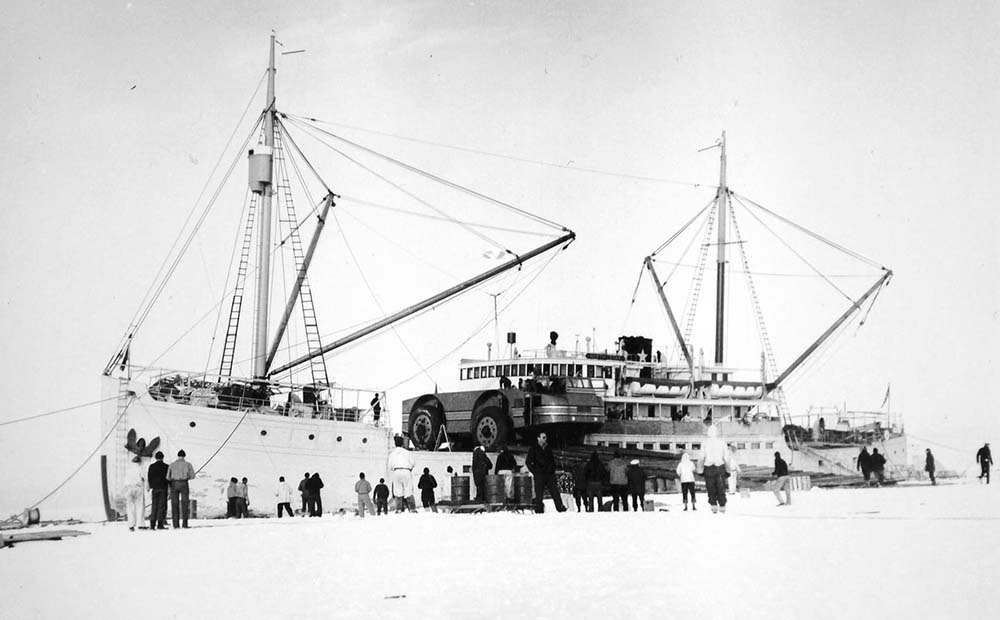
The North Star arrives in Antarctica, moored to ice in the Bay of Whales on January 15, 1940. Here, crew members are waiting for the Snow Cruiser to mount the wooden ramp during unloading.

The demolished ramp after the unloading of the Snow Cruiser.

The Snow Cruiser drives away from the North Star after unloading.
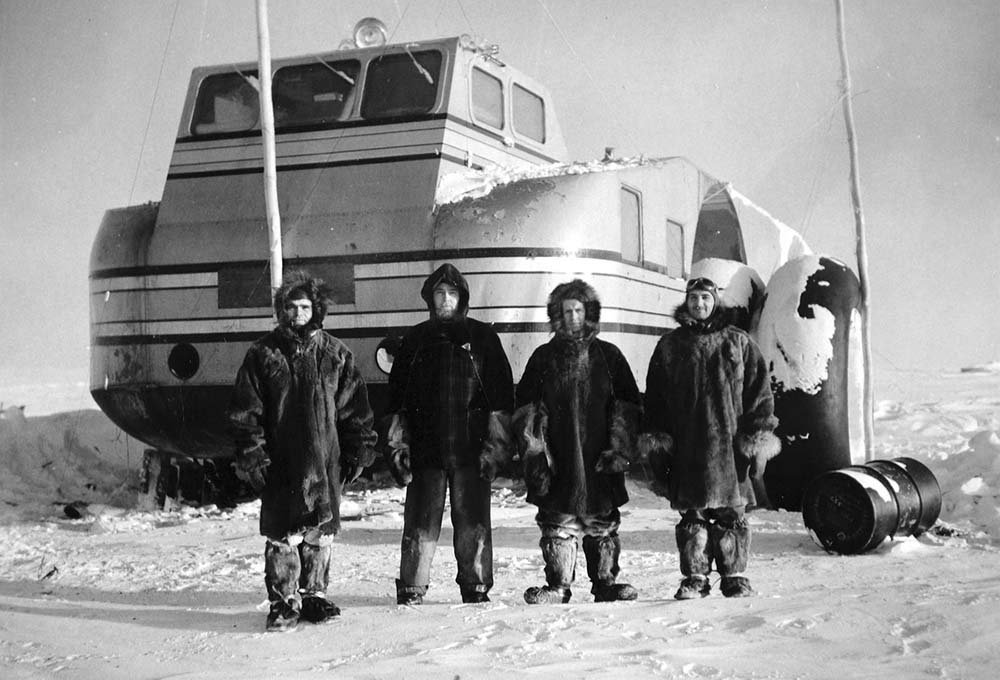
The crew of the Snow Cruiser photographed in Antarctica on September 20, 1940. From left, C.W. Griffith, diesel mechanic; F. Alton Wade, comm.; Felix L. Ferranto, radio operator; and T.A. Petras, pilot of the Snow Cruiser plane.
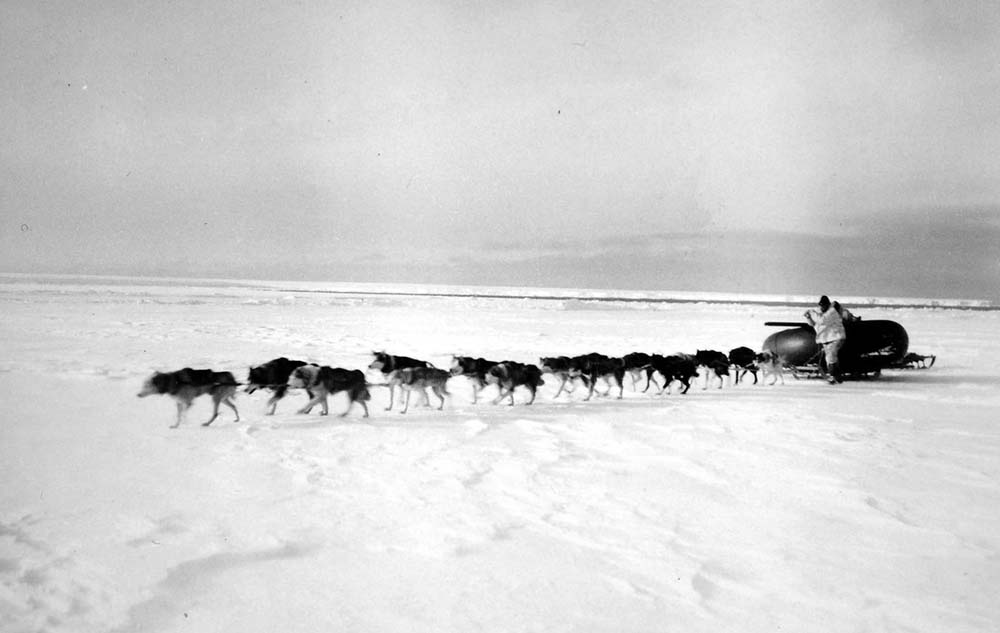
A dog team pulls a sled with one of the Snow Cruiser’s massive spare tires, on January 17, 1940.

Sergeant Felix Ferranto, radio operator, works with a primus torch to thaw out the wheel motors of the Snow Cruiser on August 23, 1940. The air temperature was -50 Fahrenheit (-45 Celsius) at the time.

Crew member T.A. Petras stands behind the Snow Cruiser on September 20, 1940.

The Snow Cruiser, as it was abandoned, on December 22, 1940.
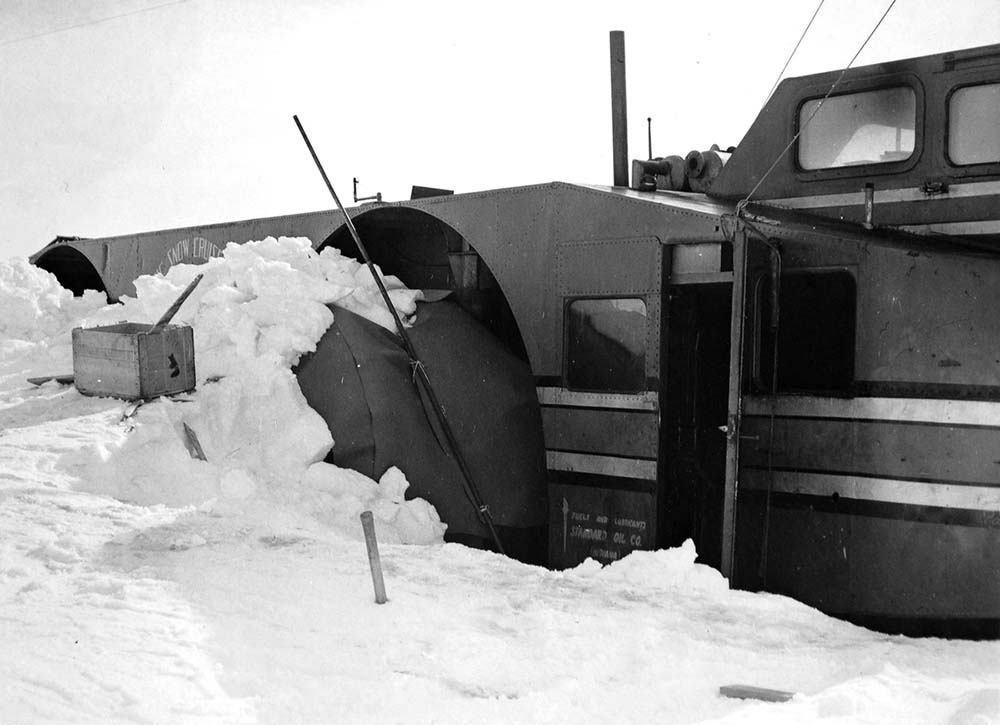
The Snow Cruiser partly buried in snow in Antarctica, 1940.
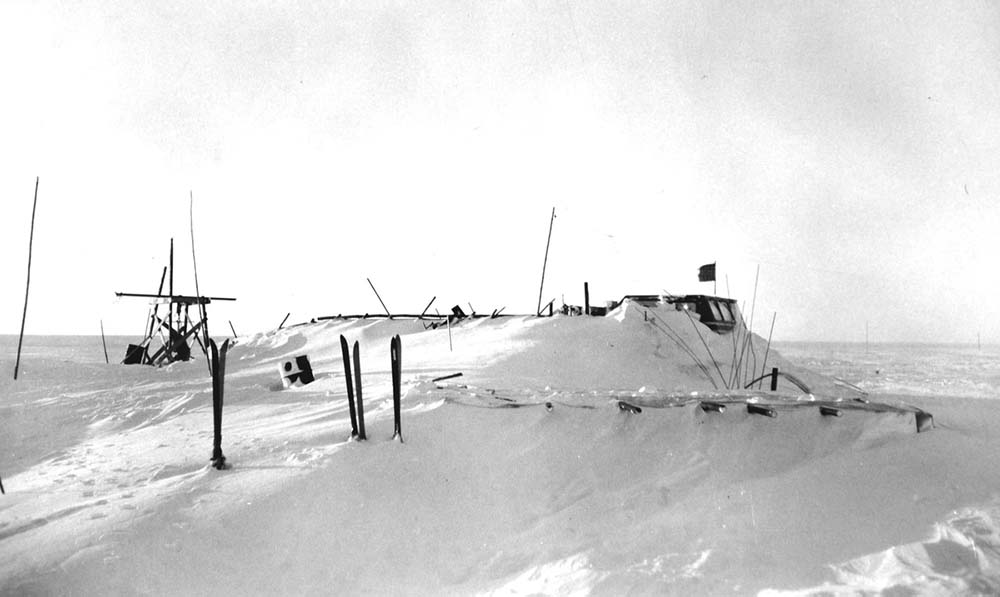
The Snow Cruiser buried after a 50 mph blizzard had blown through.

Dr. Wade, crew member, leaving the Snow Cruiser through a hatch in the surrounding snow.

